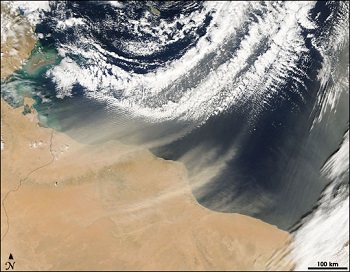340614-african dunes.jpg

Storms in the northern Atlantic are fed by dry winds off the Sahara Desert. Credit: NASA
The possible link between global warming and stronger Atlantic hurricanes is complicated. It involves changes in water temperatures, wind speeds, and other factors. It may also involve weather conditions over Africa.Many Atlantic storms are spawned by weather systems that sweep westward from Africa, including about 80 percent of the most powerful hurricanes. These systems follow two paths that flank a strong jet stream. There are fewer systems along the southern path, but they’re more efficient at turning into tropical storms than those along the northern path.
That’s because the southern storms already carry a lot of moisture when they come off the African coast — they come from some of the rainiest regions on Earth. The northern storms, on the other hand, are fed largely by dry winds off the Sahara Desert.
A recent study, though, found that global warming could change things. Researchers at Stanford used 17 different computer models to simulate changes in the global climate. Their work suggested that as things heat up, there’ll be more energy to feed the northern storms — the result of a greater temperature difference along their pathway.

